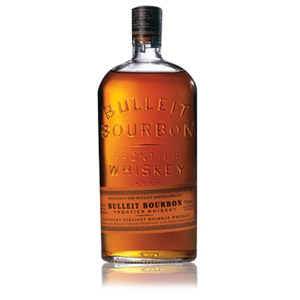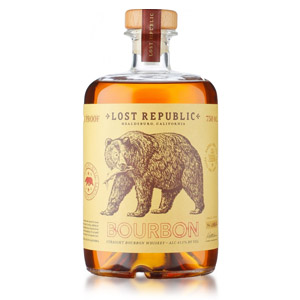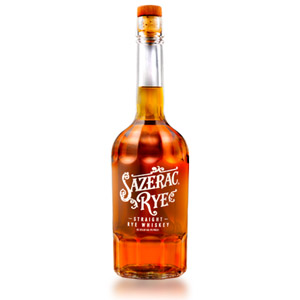Talk about a review long-overdue. It’s easy, when one gets swept up into the current of whisky fandom, to ignore the roots of the industry. It’s easy to assume that anything priced at the bottom of the market has to be inferior swill. I’ve certainly contributed my fair share to this trope. Sometimes it’s even true. Regardless, every whisky deserves to be considered on its own merits and not on its perception. To that end I give you: Jim Beam.
A surprise to some new whisky lovers, Beam products are all over the place. Many people drinking Knob Creek or Booker’s, Baker’s or Basil Hayden’s bourbon because of the higher price point and higher street cred don’t realize they’re drinking Jim Beam, just older or from a different part of the warehouse.
Jim Beam sold more than 11 million gallons of bourbon in 2017 and accounts for around 21% of the US market share. Those big numbers are largely due to brand loyalty and product placement and promotion in bars. I have to remind myself that most people do not read whisky blogs to expose themselves to new products… most people pick a brand and stick to it. So is Beam slop for the uneducated, or is it actually worth drinking?
The bourbon’s basic recipe is a low-rye mash bill of 77% corn, 13% rye, and 10% malted barley. It’s aged for 4 years (probably exactly 4 years to the day, considering the volume that the company puts out), allowing it to be called “Straight Bourbon” without an age statement on the bottle. If it were aged 3 years and 364 days then by law it would have to specify a “3 year” age statement on the label. It’s bottled at 40% ABV, the legal minimum, and retails for bottom-dollar, around $10 – $15 a bottle.
Nose: Very sweet, with a pronounced bubble gum / fruit punch / tutti-frutti aroma. Neon maraschino cherries. Not shy, a good concentration on the nose, but not a lot of dimension (oak, corn, charcoal, nothin’). This imbalance only increases with a rest in the glass, showing even more fruit punch.
Palate: Medium bodied. Mild tongue burn. A lot of the aroma notes are present here – the fruit punch in particular. There is a layer of slight nuttiness (like peanut skins without the peanuts) and a hint of charcoal. Very little oak, and almost no caramelized sugars.
Finish: Short. Some marshmallow, and (of course) fruit punch. No tannins. Fades quickly with only a hint of bitterness. Forgettable.
With Water: A few drops of water change nothing on the aroma, but they add a “white sugar” note and associated sweetness on the palate. The finish is a little livelier, with some nuttiness added. Take or leave water as you like.
Overall: Look, it’s not bad. There, I said it. It’s just not as good as “The world’s No. 1 bourbon”, as the label claims, ought to be… but then the “World” doesn’t pick its “No. 1” based solely on taste. There are so many flavors that I associate with “bourbon” as a category – charcoal, burnt sugar, caramel, heavy oaky sweetness, etc., and none of those are in evidence with Jim Beam. It has a prominent fruity sweetness (which verges on the “fake” corn syrupy candy notes found in some cheap whiskies), and it indeed has 40% alcohol in it, by volume. That’s about it. Tasting blind, I’m not certain I’d be able to guess that it was even bourbon.
I’ve noticed in the past that some bourbons carry that distinctive “fruit punch / bubble gum” note. Among them Filibuster Boondoggler, Smooth Ambler Old Scout, Basil Hayden’s (THAT makes sense), McAfee’s Benchmark, and Rebel Yell. I’m not sure where it comes from, but it usually (not always) appears at the lower end of the bourbon price range.
To orient myself, I poured a small glass of Old Bardstown ($20) to compare against the Beam. The sweetness and fruitiness of the Beam liquid caused the Bardstown to seem herbal and vegetal in comparison, but the presence of oak on the palate reminded me of what I expect from a whiskey that spends 4 years in new oak barrels. I would trade two bottles of Beam for one bottle of Old Bardstown any day of the week.
If you drink Beam because of the price, and upgrading to a $20 bottle sounds like it would be outside of your budget, I have two things to say: One, good for you for recognizing and living inside of your means. Most people can’t or aren’t willing to do that. Two, you could certainly do worse for $10 a fifth, and Beam does not taste like paint thinner. Because of that, I’m going to stick a very (very) hesitant Recommended rating on this. If you can handle the extra ten bucks, though, you owe it to yourself to try some Old Bardstown, Very Old Barton, or any other bourbon in that price range.








Having discovered a couple of bottles of Beam White Label in my parents’ liquor cabinet after they died, and having polished off both bottles over a couple of months, I can’t say I disagree with the review. But after a hard day of packing dishes, books, and clothes, the BWL hit the spot. (And it was free.) Thanks, Mom and Dad.
It’s important to remember that the BWL is very definitely bottom shelf stuff and makes no pretense to be anything else. Beam turns out other, better products at a higher price point. Knob Creek is an example. So, for that matter, is the Old Granddad BIB, which I’ve always felt was a great buy for $20 — and a whole lot easier to find than the latest iteration of the Old Bardstown. It would be a mistake to write off Beam as a whole because the BWL is no better than adequate.
In terms of bottom shelf (or near-bottom shelf) value bourbons, I’d put Evan Williams Black Label KSBW in the running. Both my Total Wine and a locally-owned chain carry the 1.75 L “handle” for $18.99. Comes to $8.15 per 750 ml. 86 proof.
Priced the same per 1.75 L is Ezra Brooks KSBW at 90 proof. Currently contract-distilled but should be their own distillate rolling out of their Bardstown rickhouses in 2 years or so.
JBWL is $22.99 per 1.75 L for comparison. Still, it’s an industry stalwart and legend. It was also my first bourbon in the fall of 1992. Four of us kids split a handle in the woods over a campfire. I don’t remember much beyond that. 😉
I really cannot understand why any distiller worth his salt would have anything to do with White Label. It is a deeply cynical product. The exact minimum required to get drunk without becoming ill. There is only one point in its favour. It is cheap.
Thing is, where I live at least, there are other whiskies which are very nearly as cheap but much better. By which I mean they actually taste of something other than raw alcohol. In fact, I am certain that some supermarket label whiskies are cheaper, not to mention Ballantine’s, Label 5 and De la Maziere cognac. White Label is the Big Mac of whisky: pointless garbage.
I agree with your point of view and disagree at the same time. This is a good drink. My absolute blind favourite drams at the moment are GlenDronach 18, Talisker 10, Ardbeg 10 and Jim Beam White Label. These I buy without hesitation.
I am now looking forward to exploring more American whisk(e)y. I thought I likes Jack Daniels but I dont. The acetone note is quite strong on it and need a lot of suppression wih stronger mixers, in my opinion.
I love Big Macs! To be frank I cut my teeth on Gorden’s Gin straight (17 yrs old) when it was still bottled in glass. I guess I am so out of it I like Jim, Red label, JB and my beloved Gorden’s… and Bud. Having a Manhattan with Jim right now. He’s great company! Go figure.
I like it very much, and find JB a Bourbon w/ no real bad habits. It’s clean, doesn’t have a crappy aftertaste, and seems to really come alive in a glass mixed w/ just water. Even at twice the price I’d still buy it.
Jim Beam White Label is disgusting and I wouldn’t drink this crap for free!!!! You give this garbage a higher rating than Knob Creek 9 year???? Go to any bourbon tasting event of your choice and tell them Beam is better than Knob which is made by the same distillery and watch how quickly you get laughed at. Seriously, take down your site you’re a clown Lmao…..
I would never say that Jim Beam is better than Knob Creek, and I did not say that in the review above, either. My ratings are not numeric, and are based on the price-quality ratio. All I said in the review that White Label isn’t as bad as everyone (including me) has made it out to be. Knob Creek is obviously better, but it’s also almost exactly twice the price. Do I recommend paying double to buy Knob? Nope, not anymore.